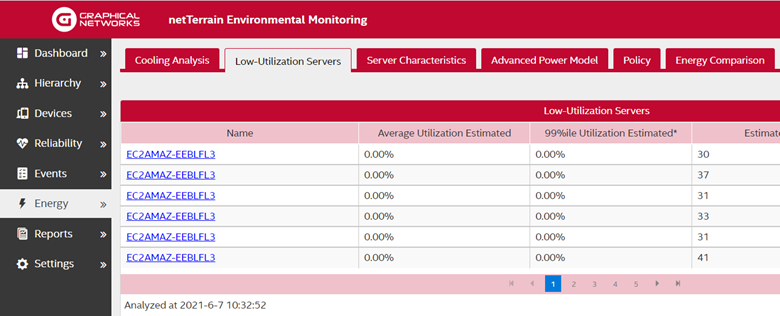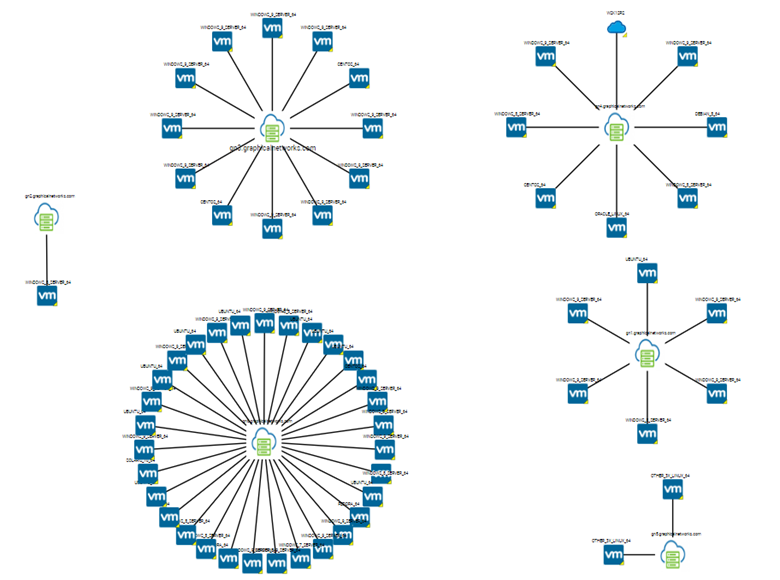
Did you know that data centers account for a whopping 2% of all global carbon emissions? Here in the US alone, 0.5% of total greenhouse gas emissions are attributed to data centers. That’s more than the emissions of the airline industry! Data centers are one of the largest consumers of electricity worldwide, with all the energy needed to house IT assets, provide cooling, and keep the lights on. If left unchecked, data centers could contribute to a staggering 3.2% of total worldwide carbon emissions by 2025. Yikes.
So, what can we do to reduce our carbon footprint and slow down climate change? Enter Data Center Infrastructure Management (DCIM) software. With the help of DCIM like our software (netTerrain DCIM), organizations can take concrete steps to protect the environment (and cut costs up to 30%).
Here are five ways DCIM software can help your organization reduce PUE (and save money while you’re at it):
PUE, Explained
1. What is PUE?
Power Usage Effectiveness (PUE) measures energy efficiency: it compares your data center’s total energy consumption to the energy consumption of your IT equipment. The lower your PUE, the more efficient your data center is. A PUE of 1.0, for example, indicates that all the energy consumed by a data center is used by the IT equipment. Meanwhile, a PUE of 2.0 means that for every unit of energy used by a data center’s IT equipment, an additional unit is used by the cooling, lighting, and other support systems of the data center. Crash course: a PUE of 2.0 is average, while a PUE of 1.5 or lower is highly efficient.
2. Why is PUE important?
Reducing PUE is crucial to reducing the carbon footprint of data centers. By improving energy efficiency, data centers can reduce the amount of energy they consume and, in turn, reduce their carbon emissions.
There’s big benefits for data center teams, too: if you’re under pressure to reduce skyrocketing energy costs while keeping everything else going (and planning expansions on top of it), reducing your data center’s energy consumption can lead to easy-peasy and significant cost savings.
How DCIM Helps Lower PUE in Data Centers, Explained
1. Slay Zombie Servers
As you know, zombie (or ghost) servers are a real threat to energy efficiency in data centers. These are servers that are physically running in your facility but not performing any useful function. Shockingly, up to 30% of all servers in an average data center could be zombie servers, wasting energy and resources. DCIM software like netTerrain can help you identify these underutilized servers, freeing up power, space, cooling, and cabling capacity. You can easily locate zombie servers in your data center rack location and, in clicks, create work order tasks to decommission them.
 DCIM software like netTerrain makes it easy to monitor your data center’s energy use and reduce PUE
DCIM software like netTerrain makes it easy to monitor your data center’s energy use and reduce PUE
2. Move to Hybrid – Virtual Servers
By moving from owning many physical servers to a virtualized environment, organizations can significantly reduce the number of servers physically present in the data center. DCIM solutions like netTerrain integrate with VMware, allowing you to see your VM images and which ESXi server they are running on in real-time. By moving virtual instances to more efficient servers, your organization can reduce hardware costs, save rack space and power costs, and decommission non-functioning servers.
 DCIM software like netTerrain integrates with VMware in clicks — so you can see all your images and where they are in real-time
DCIM software like netTerrain integrates with VMware in clicks — so you can see all your images and where they are in real-time
3. Move to the Cloud
Many organizations today are migrating entirely to the cloud or using a hybrid approach with a mix of physical hardware and a combination of virtual and cloud resources. This approach increases flexibility and scalability when deploying new resources and helps reduce carbon emissions by keeping less hardware inside data centers.
4. Integrate with your Trusted CMDB
Still documenting your data center hardware, software, cloud, and virtualized equipment using Visio diagrams and spreadsheets? How outdated is your manual process? With DCIM software, you can discover your network assets and connect to your third-party data sources, such as ServiceNow, Remedy, and SolarWinds Orion.
You can use all this information to have more effective IT Asset Management (ITAM), including tracking warranty information and cost. With good ITAM in place, data center managers can then gain full visibility into your data center assets and determine whether you need to buy new hardware or not, saving additional hardware costs.
5. Remote Management
Your DCIM solution can provide you with the ability to remotely manage your data center assets. Data center managers and network engineers can access your data center information from any location, saving valuable time and resources that would otherwise be spent driving out to a remote site or, worse yet, even having to fly out to a location that is further away!
By adopting these strategies and using DCIM software, organizations can make significant progress towards reducing their carbon footprint and fighting climate change. So, what are you waiting for? Join the fight and slay those zombie servers! Try netTerrain DCIM now and get a 14-day free trial.
More Learning:
- DCIM and PUE:
- How DCIM Can Lower PUE – Discusses how DCIM can help lower PUE.
- How to Calculate Data Center PUE – Explains how to calculate PUE and its importance in measuring data center efficiency.
- DCIM, PUE, and Alternative Facts – Discusses common misconceptions about DCIM and PUE.
- Federal Data Centers: US Mandate for DCIM Software and PUE Requirement – Discusses the US mandate for DCIM software and PUE requirements in federal data centers.
- Rack Diagrams: Why Data Center Teams Rely on Them – Discusses the importance of rack diagrams in data center management.
- Federal Data Centers: What You Need to Know About DCIM Software – Discusses the benefits of DCIM software in federal data centers.
- Zombie Servers Still Haunt the Data Center – Discusses the issue of zombie servers and their impact on data center efficiency.
- First Signs of Federal Data Center Reporting Mandates Appear in US – Discusses the impact of federal data center reporting mandates on the data center industry.
- Power in the Data Center and its Costs Across the United States – Discusses the cost of power in data centers across the US.